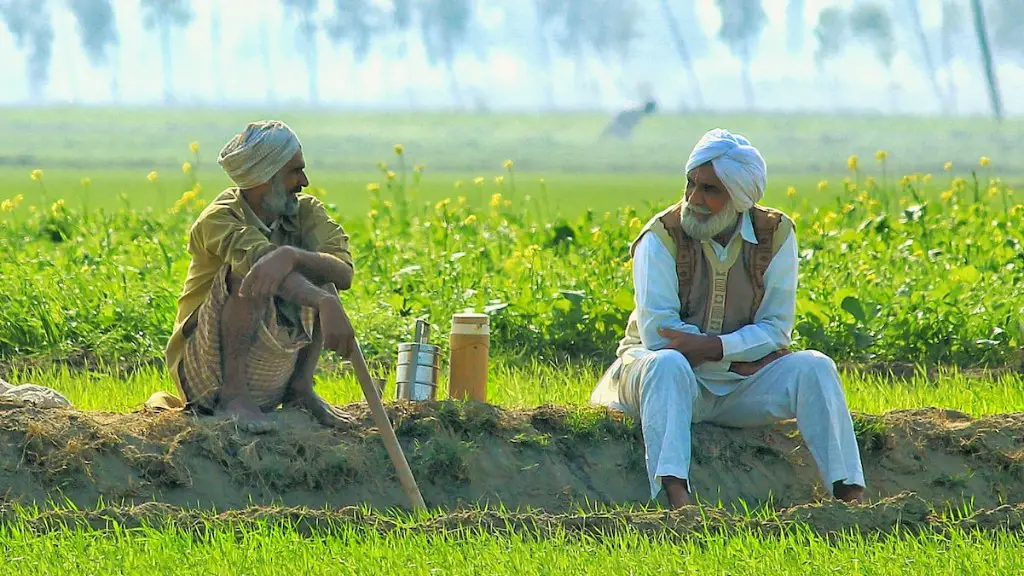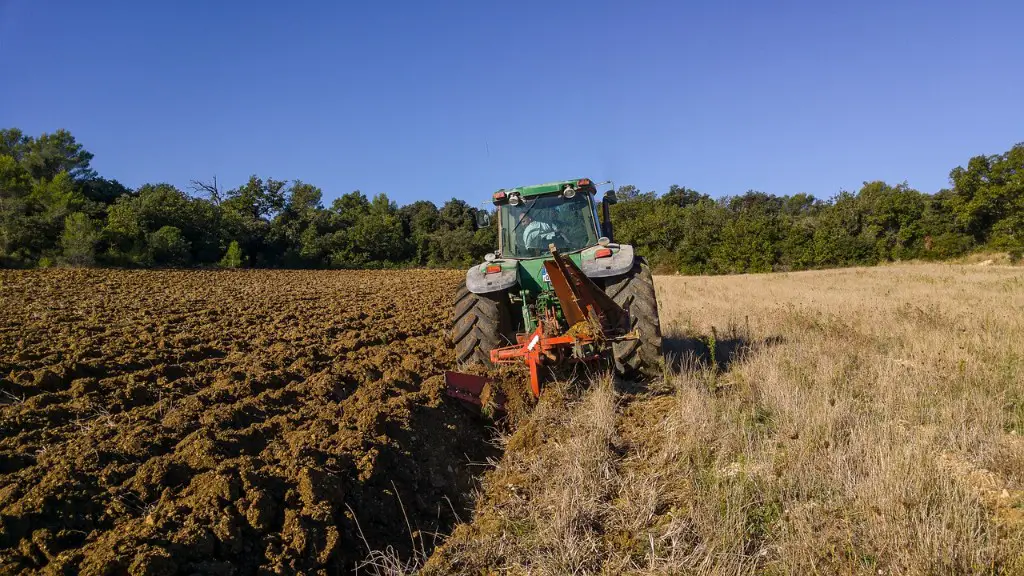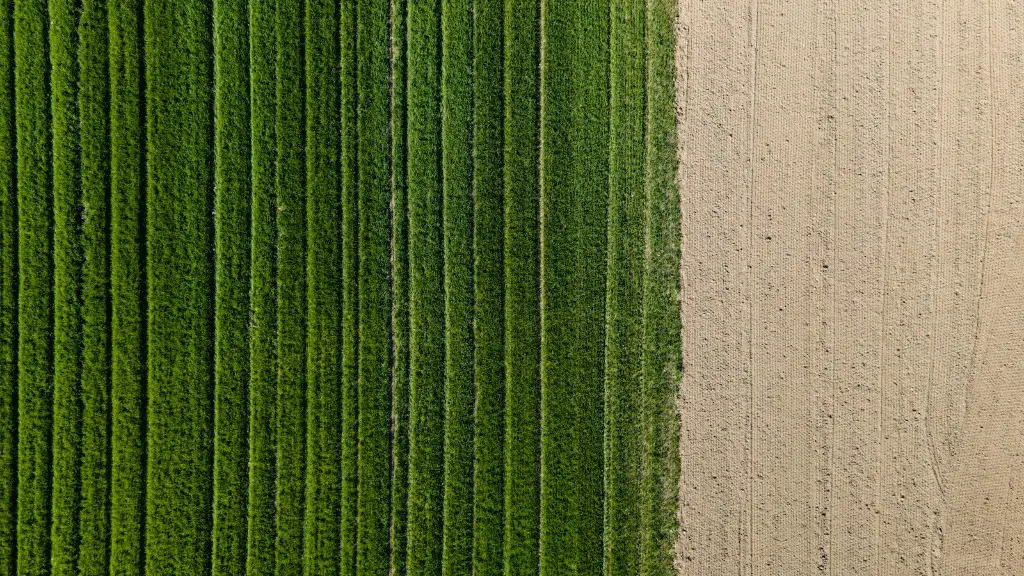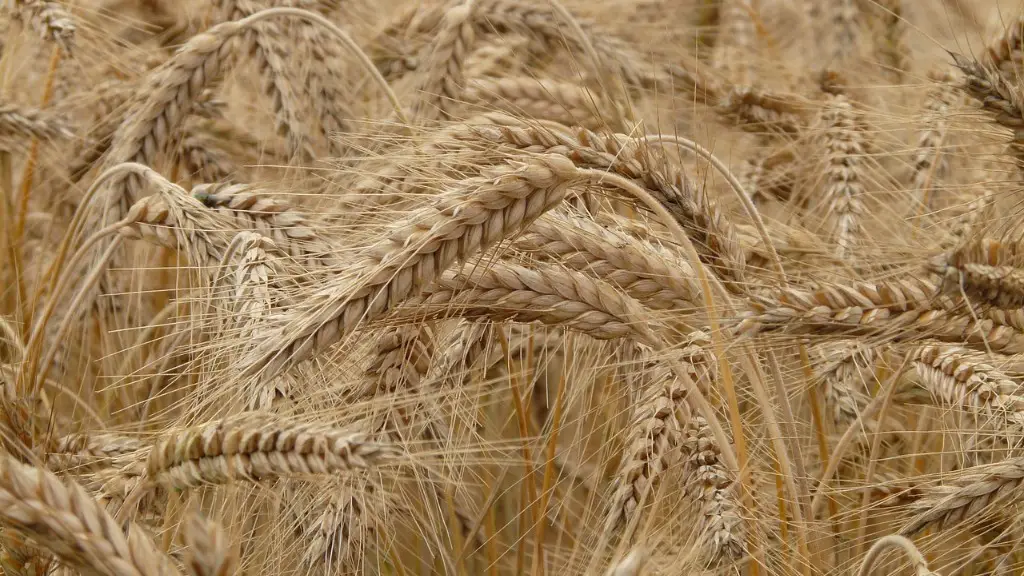The process of land fragmentation has a major impact on the agricultural industry. This is because land fragmentation can result in the loss of farmland, as well as the loss of productive agricultural land. In addition, land fragmentation can also lead to the difficulties in accessing water resources, and the soil quality.
Land fragmentation occurs when a large piece of land is divided into smaller parcels. This can happen naturally, as when a piece of land is divided among heirs, or through man-made processes, such as when a government sells off public land. Land fragmentation can have a number of effects on agriculture, including making it more difficult to use machinery, increasing the cost of labor, and reducing the overall productivity of the land.
What is fragmentation and how does it affect agriculture?
Farm fragmentation is the division of a large piece of farmland into smaller pieces. This can occur when land is divided among many legal heirs as it passes from one generation to the other. Additionally, non-conducive government policies can also lead to farm fragmentation.
Fragmented farms can often be less productive than larger, more consolidated farms. This is because fragmented farms often have a patchwork of different field sizes and shapes, which can make efficient farming difficult. Additionally, fragmented farms often have to deal with multiple owners, which can make coordination difficult.
There are a few ways to address farm fragmentation. One is to encourage consolidation, either through government policies or by providing financial incentives. Another is to better coordinate among the owners of fragmented farms. Finally, new technologies can help make fragmented farms more productive.
Land fragmentation is said to harm productivity in a number of ways. First, fragmented land holdings can increase transport costs. If the plots are located far from the home, and far from each other, there is a waste of time for the workers spent on travelling in- between the plots and the home. Second, fragmented land holdings can make it difficult to implement new technology and management practices. When holdings are small and scattered it is difficult to raise the capital needed to invest in new technology, and to coordinate workers across different holdings. This can lead to a lower level of productivity.
What happens when land is fragmented
When a habitat becomes fragmented and reduced in area, gene flow and migration are typically reduced. Fewer individuals will migrate into the remaining fragments, and small disconnected populations that may have once been part of a single large population will become reproductively isolated. This can lead to a loss of genetic diversity and a decrease in the overall fitness of the population.
The agriculture industry is highly fragmented, with production divided among a large number of companies. This lack of concentration means that no single firm has enough market share to influence the industry’s direction or price levels. This can be both a positive and a negative for the industry, as it allows for a greater degree of competition but also makes it more difficult for companies to achieve economies of scale.
What are the causes of land fragmentation in agriculture?
Land fragmentation is a process whereby a large parcel of land is divided into smaller parcels. This process is often reinforced by the law of inheritance, which dictates that property is passed down from father to son. This can result in a situation where a large proportion of the population is dependent on agriculture for their livelihood, but the land they farm is of poor quality and there is little incentive to sell or lease it.
The ecological effects of fragmentation are primarily negative on all taxa and have been well-documented, ranging from habitat loss, reduction in species richness of plants and animals (Collinge, 1996; Haddad et al, 2015), alterations to life-history dynamics, dispersal, social systems, metapopulation dynamics, and more. Fragmentation can also cause changes in the local climate, which can further exacerbate the negative effects on ecosystems (Haddad et al, 2015). In short, fragmentation is a major threat to biodiversity and ecosystem health, and should be avoided where possible.
What are the two problems with fragmentation of land holding?
The disadvantages of land fragmentation are mainly associated with inefficient allocation of resources (labour and capital) leading to increased costs of production, and with the hindering of agricultural modernization. Fragmented land ownership can prevent the implementation of efficient production technologies and lead to the over-exploitation of resources, as well as diminishing the value of land and creating social inequality.
Habitat fragmentation is a major problem across the Earth. A decrease in the overall area of wild places is bad enough, but combined with fragmentation, it can undermine the integrity of whole ecosystems. Roads, urbanisation and agriculture are some of the main activities that break up natural areas.
Why does land fragmentation lead to extinction
A recent study, however, has found that this may not be the case. The study, which was conducted in the Brazilian Amazon, found that animals in highly fragmented areas were actually more likely to persist than those in less-fragmented areas.
This study provides valuable insight into the effects of habitat fragmentation on animal populations. It shows that, in some cases, animals may be able to adapt to fragmented habitats and even thrive in them. This is an important finding, as it means that we may be able to conserve wildlife in areas that have already been heavily impacted by human activity.
Farm fragmentation has many negative impacts on small farmers. It reduces the size of the farm, making it difficult to use modern machinery and methods. This, in turn, leads to lower yields and increased poverty.
What is the importance of land fragmentation?
From the findings, it is evident that land fragmentation reduces the likelihood of shocks, on average, at the household level. This is attributed to the fact that households that practice proper fragmentation measures are able to diversify their crops, which in turn leads to a reduction in the probability of shocks. The study also found that the magnitude and significance levels are larger and significant at conventional levels for proper fragmentation measures compared to indicators of crop diversity with the number of crops grown being.
Soil contamination by fertilizers is a serious problem that can have damaging effects on nearby forest fragments. This contamination occurs when wind transports fertilized soil particles from agricultural fields to the fragments. Some studies have shown that intensifying these practices can cause changes in soil chemical characteristics, which can be harmful to the fragment ecosystem.
How can we solve the problem of land fragmentation
Land fragmentation is a major problem in many parts of the world and the solution to this problem could well be the starting point for achieving food security and sustainable rural livelihoods. Land fragmentation results in small and unproductive parcels of land which are often unable to support a family. This results in rural families being forced to either move to urban areas in search of work or to become subsistence farmers. Subsistence farming is not a sustainable solution to the problem of land fragmentation and often leads to further fragmentation of the land as families are forced to divide their land in order to survive. The solution to land fragmentation is an integrated package of measures which includes territorial organization, land management, farming systems and management, regional development and village improvements. These measures will help to increase the productivity of the land, make it more accessible and allow for the development of sustainable rural livelihoods.
There are several ways in which fragmentation can occur, for example:
-As a fragmented farm, i.e. a farm that comprises a number of parcels located some distance from one another.
-As fragmented ownership, i.e. a farmer’s holding that includes land owned by the farmer as well as land leased from others.
What are the negative effect of forest fragmentation?
Fragmentation of natural habitats can have many negative consequences for the plants and animals that live there. One of these is that it increases light levels, temperatures, and wind speeds at the fragment edges. This can be detrimental to species that are sensitive to these changes, causing them to be wiped out from the fragment.
Habitat fragmentation can have both positive and negative effects on animals. The most important long-term effects include changes in population size, distribution, and evolution. These changes can either be beneficial or harmful to the animals, depending on the particular circumstances.
How does fragmentation affect an ecosystem
Habitat fragmentation is one of the leading causes of species loss and decreased ecosystem function. When habitats are fragmented, species that contribute to important ecosystem processes, such as nutrient cycling and decomposition, are lost. This can lead to a decrease in the overall number of species in an ecosystem, as well as reduce the level of cooperation and mutualism between species.
Empirical evidence often reveals that land fragmentation has a negative effect on farm production. Fragmentation not only prevents farmers from using modern, mechanised equipment, such as tractors and harvesters, but also prevents the adoption of high profit crops that can only be cultivated on a large scale. This reduces the overall productivity of the farm, and can lead to financial losses for the farmer.
Final Words
Land fragmentation is the process where a larger piece of land is divided into smaller pieces. This can have a number of effects on agriculture, including making it more difficult to farm using large equipment, requiring more fencing, and increasing the overall costs of running a farm. In addition, land fragmentation can lead to a loss of farmland as development takes over some of the smaller parcels. This can limit the amount of land available for agricultural production and lead to higher prices for farmland.
Land fragmentation has a number of effects on agriculture. Smaller parcels of land are more difficult to farm efficiently, due to a lack of economies of scale. This can lead to higher production costs and lower profits for farmers. In addition, land fragmentation can create barriers to entry for new farmers, as it can be difficult to obtain the financing necessary to purchase multiple small parcels of land. This can lead to a consolidation of the agricultural industry, as large farmers are able to buy up smaller farms. Ultimately, land fragmentation can have a negative effect on the competitiveness of the agricultural sector, and on the ability of small farmers to stay in business.





